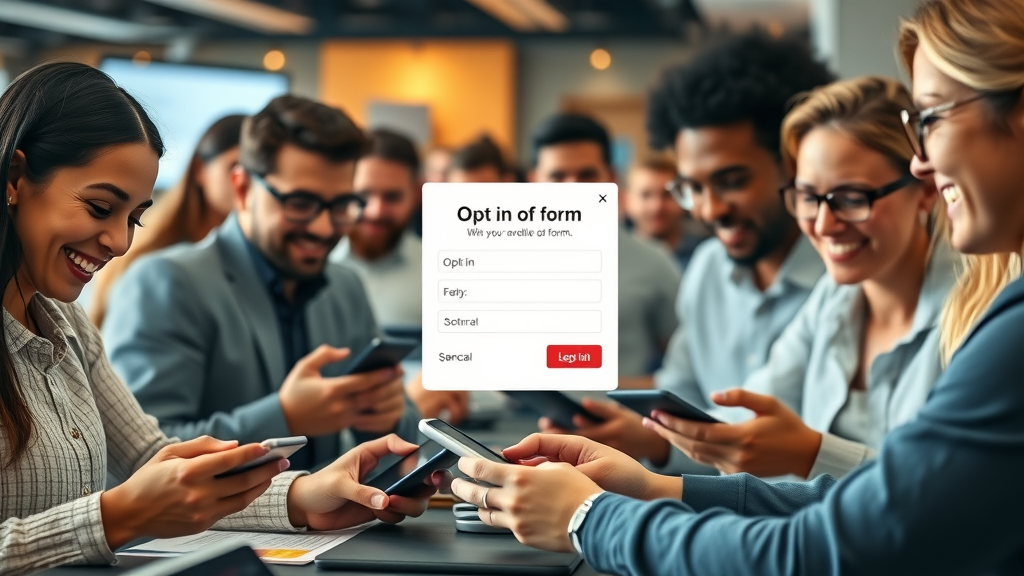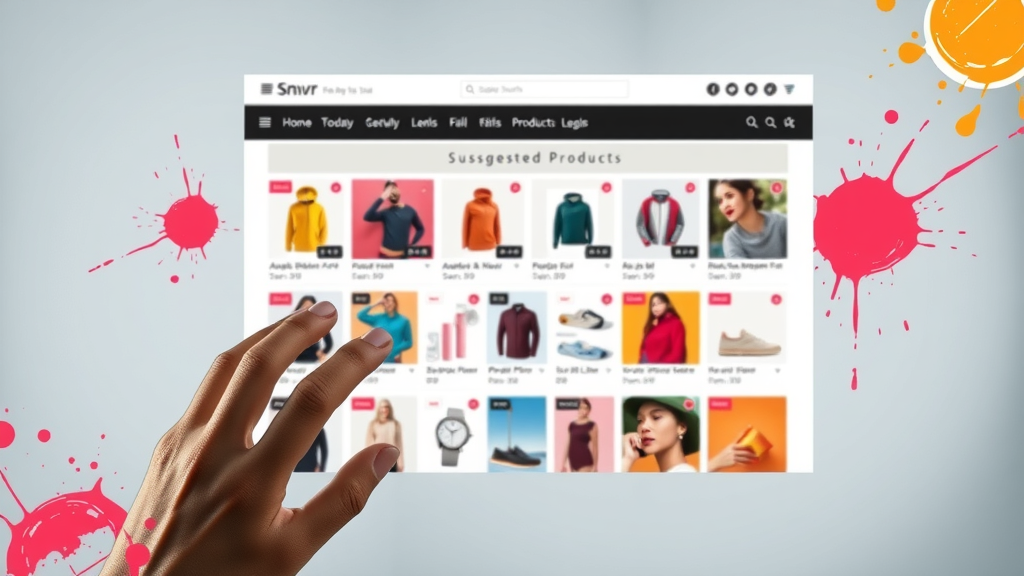"Targeted email marketing campaigns can be up to 9 times more effective at generating ROI than mass email blasts! Discover how data-driven precision can transform your marketing strategy."
How targeted email marketing increases sales and engagement
Real-world examples of successful targeted email campaigns
Essential strategies to create your own high-converting mail marketing initiatives
Actionable tips for improving every email marketing campaign
Answers to the most common questions about targeted email marketing
Understanding Targeted Email Marketing and Its Importance

Defining Targeted Email Marketing: What Sets It Apart?
Targeted email marketing is far more than just sending emails to a long list of contacts. Unlike traditional email blasts, targeted email campaigns focus on delivering messages tailored to meaningful audience segments. This approach allows you to connect with your target audience based on their interests, behaviors, and stages in the customer journey. By using advanced segmentation, purchase history, and behavioral triggers, marketers can send content that truly resonates.
Such mail marketing strategies result in higher engagement and better conversion rates , as each subscriber receives content relevant to their needs. For example, a retailer might send product recommendations based on a customer's past purchases, increasing the likelihood of a repeat sale. When you create targeted emails, you empower your marketing tool with precision, making every message count.
Why Targeted Email Marketing Outperforms Mass Email Campaigns
While traditional mail marketing may reach a broad audience, it often falls short on resonance. Targeted email marketing campaigns leverage data to personalize communication, leading to impressive open rates and higher click-throughs. When subscribers receive a personalized email relevant to their needs or interests, they are much more likely to engage with the content.
Mass email campaigns, on the other hand, tend to be generic and are frequently ignored or marked as spam. Targeted emails meet subscribers where they are in their journey, providing customer experience that builds loyalty and trust. The result: a dramatic boost in ROI for every email marketing campaign, making targeted mail campaigns the foundation of any modern marketing strategy.
"Email marketing is strongest when it delivers personal value at the right moment to the right audience."
How Email Marketing Campaigns Drive Better Conversion Rates through Targeted Strategies
A thoughtfully structured marketing campaign uses segmentation and dynamic content to push subscribers toward action. For example, by segmenting your email list based on previous engagement or demographics, you can craft subject lines and promotions tailored to each group. Such personalized attention leads to higher conversion rates when compared to generic messages.
Moreover, targeted emails can be triggered by specific behaviors—like abandoned cart emails or birthday greetings—which deliver the right offer at the right time. This data-driven approach results in measurable growth, demonstrated by increased sales, repeat purchases, and stronger brand loyalty in successful email marketing campaigns.
Comparison: Mass Mail Marketing vs. Targeted Email Marketing Campaigns | ||
Metric |
Mass Mail Marketing |
Targeted Email Marketing |
|---|---|---|
Open Rates |
12-18% |
25-45% |
Click Rates |
2-3% |
5-10% |
ROI |
2X |
8-9X |
Engagement |
Low |
High |
Getting Started with Your Targeted Email Marketing Campaign
Building an Effective Email List for Targeted Email Campaigns
Segmentation
Opt-in forms
Data collection

The backbone of every successful targeted email marketing campaign is a well-crafted and segmented email list . Building this list starts with enticing opt-in forms, encouraging website visitors or social media followers to share their emails in exchange for exclusive content, discounts, or updates. To ensure your messages reach the right audience, prioritize quality over quantity—each contact should genuinely want to hear from your brand.
Once you've started collecting contacts, segment your list based on relevant criteria. These can include demographics, location, purchase history, engagement levels, or even browsing behavior. By collecting and organizing this data at the point of sign-up, you’ll be primed to send more relevant and engaging messages, drastically improving the performance of future mail marketing campaigns.
How to Identify and Segment Your Target Audience in Mail Marketing
"Segmentation is not just about demographics. It's about understanding behaviors and motivations."
Accurate segmentation is at the heart of effective targeted email marketing . Go beyond age, gender, and location—instead, dig into behaviors such as previous purchases, pages visited, or even email open patterns. By creating audience segments based on their journey and interests, you deliver content that feels tailored, not generic.
This process typically involves using your marketing tool or CRM to tag contacts according to their actions or stated preferences. The better you understand your subscribers’ motivations, the more precisely you can target them, resulting in increased click rates and conversions in your email marketing campaigns.
Crafting Compelling Subject Lines That Drive Targeted Email Opens and Engagement
Keep subject lines clear and concise
Leverage personalization (e.g., name, location, recent purchase)
Incorporate urgency or curiosity to spark action
Test subject lines using A/B testing
The subject line is your first—and sometimes only—chance to grab attention in the inbox. To maximize open rates , write subject lines that stand out by being relevant, timely, and personal. Use your segmentation data to address subscribers by name or reference a recent activity, like “A Special Offer Just for You, Sarah!”
Additionally, use emotional triggers such as urgency (“Last chance!”) or curiosity (“You won’t believe this deal!”) to increase engagement. Don’t forget to regularly test new approaches using A/B testing, refining your strategy with each email marketing campaign to continually boost open rates and click-throughs.
Setting Clear Objectives for Your Targeted Email Marketing Campaign
A successful marketing campaign starts with specific, measurable objectives. Before you launch, ask: What do we want to achieve—higher sales, increased website traffic, more event sign-ups? Once your goals are clear, design every aspect of your campaign to serve those ends.
Setting such objectives helps you choose the right content, call-to-action, and KPIs to measure. When objectives are well defined, you can easily track campaign performance, refine tactics, and demonstrate the true value of your email marketing strategy.
Designing Personalized and Effective Targeted Email Campaigns
How to Create Targeted Emails: Content Personalization and Dynamic Elements

Personalized email greetings
Product recommendations
Behavioral triggers
To create targeted emails that truly engage, personalization is crucial. Begin by addressing subscribers by name and tailoring the content to their unique interests. Dynamic content blocks can be used to display product recommendations based on purchase history or browsing behavior, dramatically improving conversion rates.
Automation tools allow for the inclusion of behavioral triggers—such as sending a specific email if a customer abandons their shopping cart or visits a certain page. These timely, relevant touches build a better customer experience and can significantly increase the results of any targeted email marketing campaign.
Best Practices for Email Design in Email Marketing Campaigns

Good design enhances reading and encourages further action in your email campaign . Use short paragraphs, clear calls-to-action, and mobile-responsive templates. Keep brand visuals consistent, but avoid clutter—focus on one main message per marketing email.
Enhance your CTAs using bright buttons and actionable language (e.g., "Shop Now," "Learn More"). Test image-to-text ratios to avoid spam triggers, and always preview emails across devices before scheduling your mail campaigns. Following these best practices ensures better interaction and conversion.
Scheduling Your Email Marketing Campaign for Maximum Impact
When you send your emails is often as important as what you send. Analyze your target audience to determine the days and times they most frequently open emails. For some businesses, weekday mornings see the highest engagement; for others, evenings or weekends perform best.
Take note of your previous campaign analytics. Experiment with scheduling to discover sweet spots, and consider audience geography—time zones can impact open rates. Utilize your mail marketing platform’s analytics tools to pinpoint and replicate high-performance send times.
A/B Testing Subject Lines and Content in Targeted Email Marketing
Regular A/B testing of subject lines , content blocks, and calls-to-action can elevate any targeted email marketing campaign. By comparing two or more variants, you learn what resonates most with different segments. For instance, you might test a straightforward subject line against one with an emoji, or a single-column layout versus a double-column design.
These experiments, when interpreted accurately, result in continuous improvements. Track which variables deliver the best open and conversion rates, and apply those findings to future campaigns. Testing isn’t a one-time event but an ongoing process that sharpens the effectiveness of every email you send.
A/B Test Results: Real-World Improvements from Optimized Targeted Email Campaigns | ||||
Tested Element |
Variant A |
Variant B |
Winner |
Change in Conversion Rate |
|---|---|---|---|---|
Subject Line |
“Exclusive Sale Inside” |
“Just for You, Save 20% Today!” |
Variant B |
+3.2% |
Email Layout |
Single-Column |
Double-Column with Product Grid |
Variant B |
+2.8% |
CTA Button Color |
Blue |
Orange |
Orange |
+1.6% |
Advanced Tactics for Maximizing Targeted Email Marketing ROI
Automating Your Targeted Email Campaigns for Scalable Success
Automation workflows
Drip campaigns
Behavioral triggers

Automation is a game changer for scalable and sustainable email marketing growth. With the right marketing tool, you can set up workflows that deliver the perfect message at the perfect time—such as drip campaigns for onboarding new subscribers or re-engaging inactive contacts based on behavior.
Automated behavioral triggers, such as birthday greetings, abandoned cart reminders, or post-purchase follow-ups, ensure no customer falls through the cracks. This automation not only saves time but also boosts your conversion rates, keeping your marketing campaigns relevant and consistent.
Integrating Product Recommendations into Targeted Emails

Integrating product recommendations based on past purchases or browsing habits is a proven way to increase sales. Advanced analytics can identify top products for each segment, allowing you to feature relevant items in your targeted email campaign.
Whether you’re a retailer or a service provider, including dynamic recommendations in every email campaign encourages recipients to explore more offerings, creates upsell opportunities, and makes subscribers feel understood by your brand.
Leveraging Data Analytics to Refine Your Email Marketing Strategy

Your data is the key to continuous improvement in targeted email marketing. Analyze every campaign to uncover insights on what drives open rates, clicks, and conversions. Tools like Google Analytics or built-in dashboard reports help you pinpoint which audience segments and content types perform best.
Use these insights to refine segmentation, adjust your messaging, and identify opportunities to test new strategies. Regularly reviewing analytics allows you to align campaigns with your overarching marketing strategy and beat your own benchmarks for success.
Increasing Conversion Rate with Strategic Follow-Ups in Mail Marketing
A single email rarely secures maximum conversions. Plan follow-up sequences based on subscriber response—if someone clicks but doesn’t buy, send a tailored message reminding them of what they left behind, or offer an added incentive. This strategic persistence is invaluable for improving the overall conversion rate in your mail marketing.
Timing and relevance are everything. Use automation to assure these follow-ups aren’t forgotten, and craft each touch point to move recipients steadily through your sales funnel.
Benchmarks: Industry Average Email Marketing Campaign ROI by Sector | |||
Sector |
Average Open Rate |
Average Click Rate |
Average ROI |
|---|---|---|---|
Retail |
23% |
3.1% |
8X |
B2B |
27% |
4.2% |
7X |
Nonprofit |
28% |
4.5% |
6X |
Compliance and Best Practices in Targeted Email Marketing (GDPR, CAN-SPAM)
Compliance isn’t just best practice—it’s necessary for reputation and deliverability. Make sure your targeted emails adhere to regulations like GDPR and CAN-SPAM by offering clear opt-outs, never purchasing email lists, and keeping data secure. Always get explicit opt-in prior to contacting anyone for your mail campaigns.
Maintain transparency in your marketing strategy—clearly state how you’ll use subscriber data and respect all preferences. Compliance builds trust and is essential for the long-term success of your targeted email marketing campaign.
Case Studies: Successful Targeted Email Marketing Campaigns
E-Commerce: Personalized Product Recommendations That Double Click-Through Rates
"After segmenting our email list, we saw our conversion rate increase by 35% in one quarter."
An online retailer segmented their email list by product interests and purchase history, then used dynamic content to automate product recommendations . Subscribers began receiving emails featuring items they were most likely to buy. The result: click-through rates doubled and overall conversion rates climbed by 35% in just three months.
By aligning mailing content with each audience segment’s preferences, this targeted email campaign delivered on both engagement and revenue, far outperforming mass blasts.
B2B: Automated Targeted Email Campaigns That Accelerate the Sales Funnel
A B2B SaaS company implemented targeted, automated onboarding and event-triggered follow-ups as part of its email marketing campaign. By using automation workflows and dynamic segmentation, leads got timely, relevant information about the platform—and reminders to schedule demos.
As a result, the company saw shorter sales cycles and a 28% increase in demo sign-ups compared to their previous generic mail campaigns.
Nonprofits: How Targeted Emails Built Lasting Donor Relationships

Nonprofit organizations also reap the rewards of targeted email marketing. One nonprofit segmented its donors by donation size and frequency, then sent personalized email thank-you notes and tailored updates. Donors responded with increased engagement and higher recurring giving rates, turning one-time supporters into loyal advocates.
This example illustrates that every sector—from retail to nonprofits—can benefit from adopting targeted strategies in their mail marketing efforts.
How to Measure Success in Targeted Email Marketing
Open rates
Click-through rates
Conversion rates
Unsubscribes
Revenue per email
Analyzing and Interpreting Targeted Email Marketing Data

To truly measure the effectiveness of any targeted email marketing strategy, you must consistently track key metrics like open rates, click-throughs, conversions, and unsubscribes. Deeper dives into revenue per campaign or per email help assess ROI and guide future decision-making.
Use performance dashboards to identify which subject lines, designs, or segmentation strategies yield the best results. It’s also important to interpret this data in context—considering external factors like seasonality and parallel social media campaigns—which can influence your marketing efforts.
Using Insights from Your Mail Marketing Campaigns to Drive Continuous Improvement
Pro tips: Iterative testing, learning from failures, continually adapting your marketing strategy
The most successful marketers treat each targeted email campaign as a learning opportunity. Apply insights from each send to refine your segmentation, subject lines, and content. Continuously test, iterate, and stay flexible in your approach so you can adapt to evolving subscriber preferences.
This cycle of improvement ensures that every campaign gets stronger, producing better engagement and a higher conversion rate over time.
Sample Targeted Email Marketing Campaign Performance Dashboard | |||
Metric |
This Campaign |
Previous Campaign |
Change |
|---|---|---|---|
Open Rate |
41% |
36% |
+5% |
Click-Through Rate |
7.8% |
6.5% |
+1.3% |
Conversion Rate |
4.2% |
3.7% |
+0.5% |
Revenue Per Email |
$1.95 |
$1.50 |
+$0.45 |
The Future of Targeted Email Marketing: Trends and Innovations
AI and Machine Learning in Email Marketing Campaign Optimization

The latest generation of email marketing strategies is powered by AI and machine learning. These technologies can automatically analyze subscriber data, recommend content, and optimize send times for each individual recipient.
AI-driven tools can predict which offers resonate most, automatically segment lists, and even generate personalized subject lines. The result is more relevant campaigns and a smarter, more hands-off approach to targeted email success.
Interactive Emails: The Next Step in Mail Marketing Campaigns
As inboxes grow more crowded, interactivity becomes a key differentiator. Interactive elements—like polls, carousels, and embedded shopping experiences—invite recipients to engage directly within the email. This can drastically improve engagement, keeping your mail campaigns at the forefront of subscribers’ minds.
Marketers who embrace interactive email marketing set the pace for higher engagement and innovation in their overall marketing campaign strategy.
Omnichannel Strategies: Integrating Email with Broader Marketing Campaigns for Holistic Success
"Marketing campaigns are evolving, but targeted email marketing continues to deliver unmatched precision and ROI."
Today’s most successful brands integrate targeted emails with their social media, SMS, and web campaigns for a unified, multi-channel experience. Each channel supports the others—using customer insights gained from email to improve ads, website personalization, and customer service.
An omnichannel marketing strategy ensures that no matter where your customer engages, their experience is seamless and personalized, boosting both loyalty and sales.
People Also Ask: What is targeted email marketing?
Answer: Targeted email marketing is a strategic approach to mail marketing where messages are personalized for specific segments of your audience, increasing the relevance and effectiveness of each email sent. This results in better engagement, higher conversion rates, and a more efficient marketing campaign.
People Also Ask: How to create targeted email campaigns?
Answer: Creating targeted email campaigns involves segmenting your email list based on subscriber behavior or demographics, personalizing content and subject lines, running A/B tests, and continually refining your strategy using analytics from each targeted email campaign.
People Also Ask: What is a targeted email list?
Answer: A targeted email list is a collection of contacts grouped by shared characteristics or behaviors, allowing marketers to send relevant, personalized content through targeted email marketing, thereby improving engagement and campaign performance.
People Also Ask: What is targeted communication in marketing?
Answer: Targeted communication in marketing refers to delivering messages tailored to specific audience segments, ensuring each viewer receives content most relevant to their interests and needs, boosting the effectiveness of all marketing campaigns, especially email marketing.
Frequently Asked Questions about Targeted Email Marketing
How often should I send targeted emails in a mail marketing campaign? For best results, send targeted emails consistently but not so often that you risk unsubscribes. Depending on your audience, once per week or biweekly is generally optimal, but monitor engagement and adjust your frequency according to what your analytics indicate.
What tools are recommended for managing targeted email campaigns? Leading tools like Mailchimp, HubSpot, ActiveCampaign, and Klaviyo offer advanced segmentation, automation, and analytics capabilities designed for maximizing your targeted email marketing ROI.
How do I avoid my emails being marked as spam during my email marketing campaign? Practice good list hygiene, send only to those who have opted in, use clear sender information, avoid spammy language, provide easy opt-outs, and ensure email authentication (SPF, DKIM) is set up for your domain.
Video: How Segmentation Transforms Targeted Email Marketing
Video: Crafting Compelling Subject Lines for Targeted Email Campaigns
Video: Advanced Automation in Targeted Email Marketing Campaigns
Essential Takeaways for Mastering Targeted Email Marketing
Personalize every message for each segment
Use analytics to guide constant improvement
Test subject lines for the best engagement in your marketing campaigns
Stay current with compliance and best practices for email marketing
Integrate targeted email with your overall marketing strategy for bigger wins.
Start Elevating Your Marketing Results with Targeted Email Marketing
Implement segmentation today to see instant improvement in campaign results
Use the strategies and tips outlined for immediate wins in mail marketing
Revisit your campaign analytics regularly and refine your approach for ongoing success.
Ready to boost your ROI? Start segmenting, personalizing, and optimizing your targeted email marketing campaigns now for measurable business growth.
To deepen your understanding of targeted email marketing, consider exploring the following resources:
“Targeted Email Marketing: Benefits and Best Practices” ( emailbulksender.com )
“Targeted Email Marketing: Uplevel Your Customer Experience” ( sendgrid.com )
These articles provide comprehensive insights into the advantages and methodologies of targeted email campaigns, offering practical strategies to enhance your marketing efforts.
 Add Row
Add Row  Add
Add 




Write A Comment